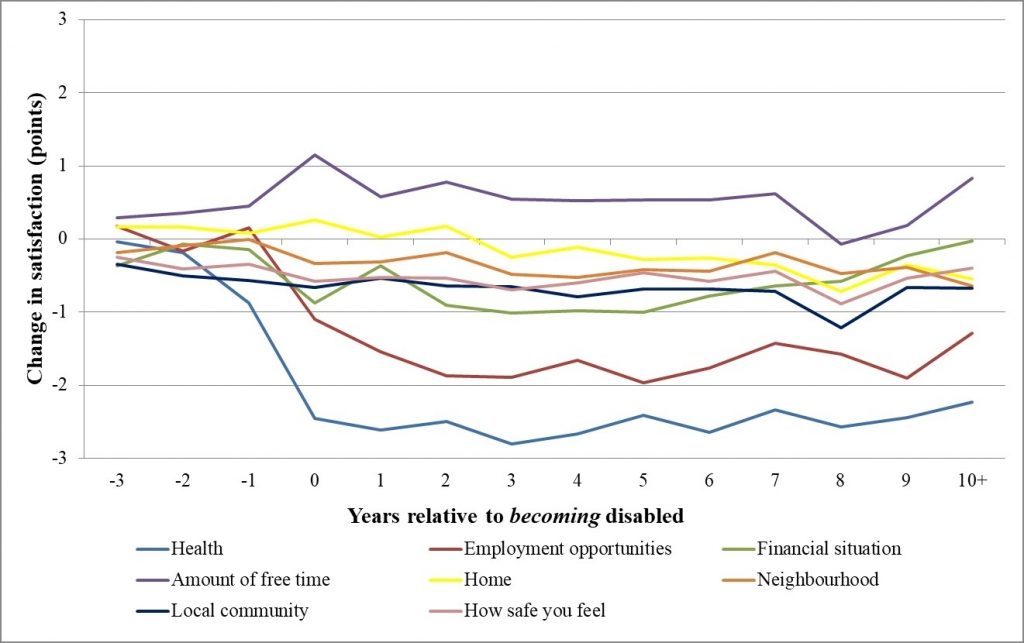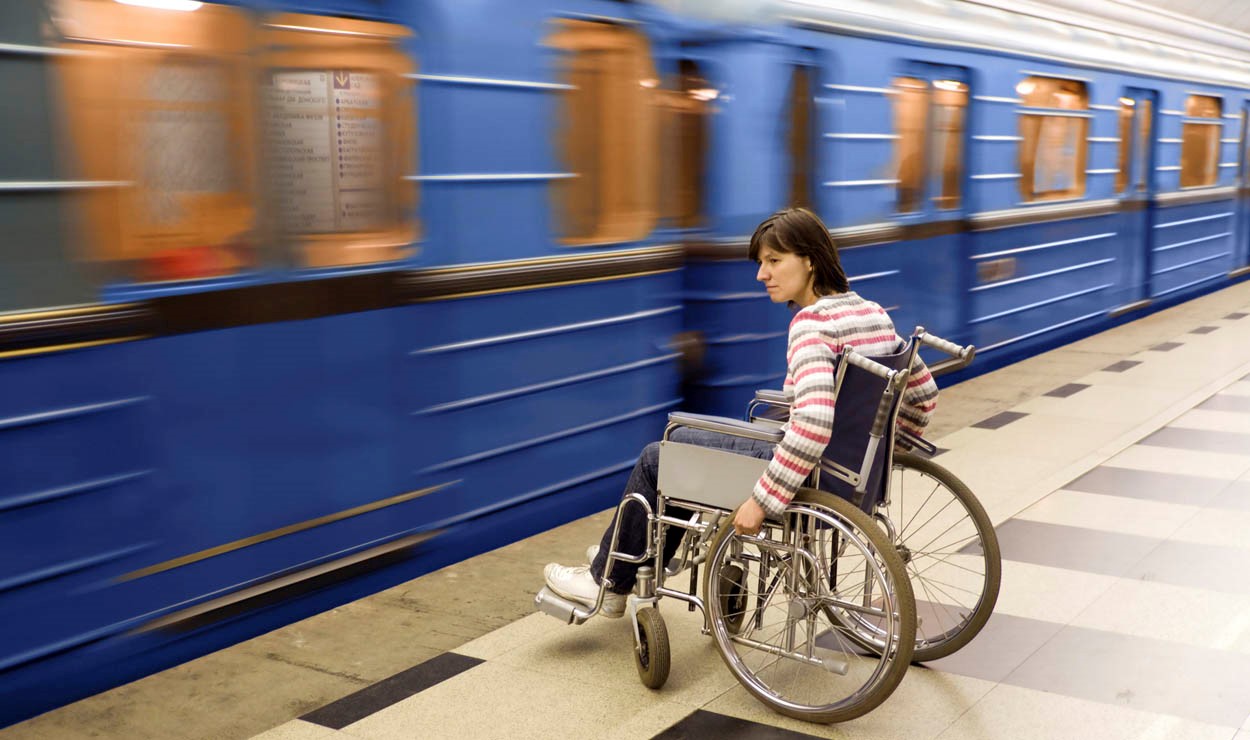Disability, that is, the presence of a long-term limiting health condition, is associated with substantial economic disadvantage, as illustrated by the low rates of employment and high rates of poverty among disabled people.
Yet becoming disabled during the life course, which is experienced by more than 80% of disabled people of working age, can potentially impact on a wider and more diverse range of aspects of a person’s life, including measures of social participation. One potential way of capturing the overall impact of such a diverse range of channels is by using a measure of individual wellbeing such as life satisfaction. The latter is increasingly being used within Economics to explore the drivers of ‘happiness’ and by policy makers as part of the National Wellbeing Agenda. This type of measure, which is collected through large scale national surveys, asks individuals to reflect on and assess their overall perspective of their life and report this, typically on an ordered scale ranging from least, to most, satisfied.
In recent research, Professor Melanie Jones of Cardiff Business School and WISERD, in collaboration with co-authors at Swansea University (Professor Peter Sloane) and at the Future of Employment and Skills Research Centre, University of Adelaide, Australia (Professor Kostas Mavromaras and Dr Zhang Wei), explores the impact of becoming disabled on a range of measures of life satisfaction. Using data from the Household, Income and Labour Dynamics in Australia Survey in which the same individuals can be traced over time, life satisfaction is compared before and after an individual becomes disabled between 2001 and 2013. The results show a dramatic decline in wellbeing at the point when a person first experiences disability. This persists when the disability is defined as long-term. Indeed, the impact continues for the entire 10 year period observed within this study, suggesting there is no improvement in life satisfaction, or that disability has a largely permanent effect. In contrast, temporary disability is found to have only short-term effects on life satisfaction consistent with people being able to adapt or recover from a short (one-year) spell of limiting health conditions. Moreover, among long-term disabled people, the severity of the restriction imposed by disability matters, with those with severe relative to non-severe disability reporting about 3 times the reduction in life satisfaction. The results point to variation in the experience of disability as a major determinant of the impact of disability on life satisfaction and suggest a need for tailored policy support which depends on the nature of the condition, both in terms of severity and duration.
Dimensions of Life Satisfaction
By exploring different aspects of overall life satisfaction, the analysis traces the impact of disability on a range of dimensions of life, from satisfaction with health and economic circumstances, to the community and neighbourhood. Starting 3 years before and ending 10 years after becoming disabled, the Figure below traces the impact of becoming disabled on life satisfaction. It presents results for these dimensions separately where each is recorded on the same 11 point scale (0-10) which increases with satisfaction. In each case, the change in satisfaction relative to more than 3 years before becoming disabled is recorded. Unsurprisingly disability has the most pronounced impact on satisfaction with health, reducing it by about 2.5 points. However, there are clear negative implications for both satisfaction with employment opportunities (up to about 2 points) and, to a lesser extent, financial situation (up to about 1 point), although the impact on the latter does not persist. The difference between employment opportunities and financial situation potentially reveals a supporting role of government (e.g. welfare payments) and/or the family (e.g. spousal income) in the event of job loss.
While the scale of the change is more modest, becoming disabled also leads to a decline in satisfaction with the neighbourhood in which you live, with feeling part of the local community and how safe you feel (typically 0.6-0.8 points), illustrating the diverse range of social impacts of disability. Interestingly becoming disabled does not have a negative impact on satisfaction with the home in which you live and actually has a temporary positive impact on the satisfaction with the amount of free time you have, a likely consequence of lower levels of employment and, albeit providing no indication of the quality of that free time.

The analysis suggests that focusing on economic indicators alone will underestimate the disadvantage experienced by disabled individuals and highlights the need for policy support in a wider range of areas if wellbeing is a goal of government policy. This is in contrast to the international focus on income, and earnings-replacement disability welfare payments in particular, which neglect the broader impact of disability. The newly introduced National Disability Insurance Scheme (NDIS) programme in Australia instead places emphasis on improving the economic and social participation of disabled people, including through providing more individualised support to meet a person’s needs and aspirations. An evaluation of the introduction of the scheme on the wellbeing of disabled people is clearly of relevance to policymakers internationally.
For more information please see the full report: Jones, M., Mavromaras, K., Sloane, P. and Wei, Z. (2018) “The Dynamic effect of Disability on Work and Subjective Well-being in Australia” forthcoming at Oxford Economic Papers.

